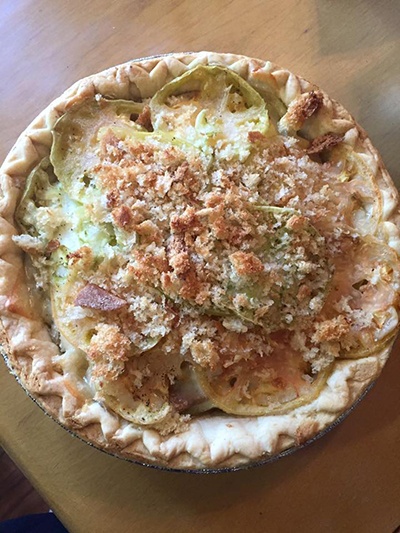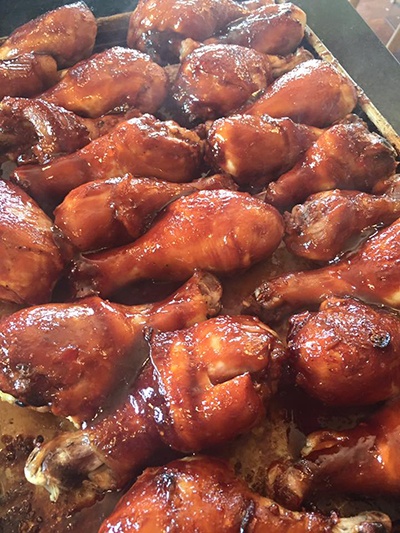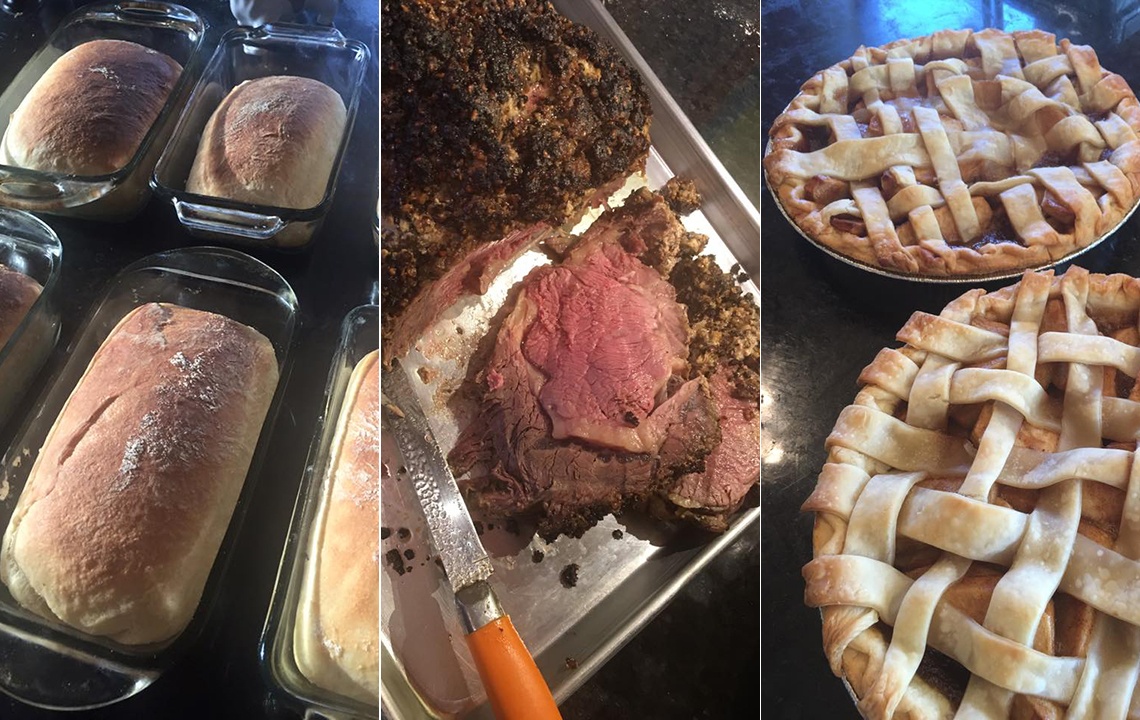The owner of a successful farm-to-fork meal service business explains how she got her start and what it takes to run the company that provides meals to an average of more than 50 families a week.
Amanda Browning, of Lula Georgia, never imagined she would be supporting her family by running a farm-to-fork food delivery business from her home.
But that is exactly what this mother of 5 is doing…and she’s killing it in a very rural part of the country.
 If you have ever dreamed of working from home, being there for your kids when they get home from school, funding your hobby farm or homestead, or just flying the corporate coop, this could be your ticket to total freedom.
If you have ever dreamed of working from home, being there for your kids when they get home from school, funding your hobby farm or homestead, or just flying the corporate coop, this could be your ticket to total freedom.
In today’s post, Amanda shares with us how she started this successful rural-work-at-home business and how, with a little know-how, some hard work, cooking talent, organizational skills, and family participation, you can do the same.
Listen up, country-living-dreamers! This post could change your life:
A Lay-Off, A Prayer, and a Call to Jump…
What is a Farm-to-Fork?Also known as farm-to-table, farm-to-fork refers to businesses and entitites on a mission to connect people to more local, farm-fresh foods. In the instance of this article, Amanda's Farm-to-Fork uses produce from the family's own farm and other local food sources to prepare meals that will be delivered to various locations for customers to pick up. |
If you’ve read our previous post with Amanda, “How To Make Farm Chores Fun for Children of All Ages,” you know that Amanda's entrance into the full-time work-at-home world was a rocky one.
Up until 2015, she had worked a 9-5 job at her family’s business making 100K a year, until one day she was told the business was closing and she was out of a job.
It happened that fast.
“I remember going home and telling my husband—and I was completely freaking out because we have five children to support. Without missing a beat, he said: Amanda, God’s got this, all we need to do is pray and he will show us the way.”
Inspired by her husband’s faith and support, that’s just what they did. They took advantage of their 27-acre hobby farm by expanding their growing operations to bring in additional income and provisions, and Amanda took a clerical job in a small office to help make ends meet. But she could not shake her desire to work from home. She just couldn’t figure out how to do it, until one morning…
“Steve Harvey did a show where he talks about God giving every person some type of gift, and that every single successful person in this world has had to identify that gift and take a jump to live in that gift. I would listen to that message every single morning before I’d go to that office job, and finally I got up one morning and I told my husband: I’m not going back. I CAN do this.”
That’s when she and her husband decided to jump and start a food delivery service therein known as Amanda’s Farm to Fork. Here is how they did it, and how you can do it too.
What you Need to Start a Farm-to-Fork Meal Service Business and How Much It Costs
Amanda started on a “shoe-string budget,” using her existing kitchen setup, which included one stove and two refrigerators.

After the business's clientele expanded beyond 10 families, they added a second stove and two more refrigerators for a total of four refrigerators:
“One refrigerator is strictly for vegetables, one is for meats, one for our family’s food—which means no other food goes in there—and one is to store food being prepared. This way it keeps everything separated, sanitary, and organized.”
To keep start-up costs low, Amanda recommends buying used appliances and cookware from resale shops, friends, and Goodwill.
For packaging items, she orders delivery containers (re-usable containers are a no-no for food safety) from webrestaurant.com, and uses paper bags stamped with her logo for deliveries.
Says Amanda on packaging costs: “I’ve learned that people care a whole lot more about what’s in the bag than what’s on the bag, so we keep it simple and that keeps costs down.”
Since a farm-to-fork can be operated from your home kitchen, the startup costs can be zero to a few hundred dollars for equipment and used appliances.
The Legalities of Running a Food Service Business from Home
Every state is different, but in Amanda’s home state of Georgia an at-home food service business requires two things:
- A Cottage License—which allows you to prepare food in your kitchen, and costs $150 in Georgia.
- A ServSafe Certificate—which you can obtain after taking a course and passing a test in food service safety. It costs $35 in Georgia. Find regulations for your state by clicking here.
How to Procure Farm-Fresh Food and Supplies
Amanda and her husband work together to procure all the food on Fridays and Saturdays from local vendors, farmer’s markets, and stores.
“When it’s growing season in Georgia, I’m able to get most my vegetables from other local vendors at the Farmers' Market, and all the meat comes from Harris All Natural Meat and Butcher Shop, our local butcher who raises his animals humanely and without hormones or antibiotics. He gives me a bulk discount for volume.”
In the off-season months, Amanda relies on the DeKalb Farmer’s Market in Atlanta for all their organic produce and most other packaged items.
“It takes us over an hour to drive there once a week, but we can buy by the case, we get a case discount, they let us look through the cases to check quality, and I know how fast they turn over their food.”
Amanda also shops for certain items like butter, cheese, and flour at Sam’s club and odds and ends at Kroger, which earns them fuel points that help reduce the cost of delivering food.
What about using co-ops and delivery services? Says Amanda:
“I do not use co-ops and delivery services and I’ll tell you why: I don’t like the idea of something sitting on a truck for so long, I’d rather be able to choose it, see it, and smell it myself so I know it’s fresh. That’s why I like shopping in-person. We will also be supplying some of our own fruit and vegetables from our farm this year.
“In the beginning it’s hard to calculate what you’ll need but most of it is spreadsheets and organization. Plus, I always budget for a little extra in case something burns, that way I don’t have to run out to the store.”
As an added benefit, they include their family’s food budget within the weekly shops, so they save significant funds through the bulk discounts afforded to the business.

What A Typical Shopping Week for a Farm-to-Fork looks like:
Thursday Night:
- All customer orders are due in Thursday at 9 p.m., so the shopping list can be prepared.
- Prepare the shopping list for the next day using spreadsheets.
Friday:
- First Stop (9 a.m.): Sam’s Club, on the way to Atlanta.
- Second Stop: DeKalb Farmer’s Market in Atlanta.
- Third Stop: Harris Natural Meats and Butcher Shop in Commerce, GA.
- Arrive home around 3:00 p.m. to unload and store the food.
Saturday:
- Odds and ends shopping at Kroger.
- Unload and finish by 11 a.m.
Where to Find Farm-to-Fork Customers
Finding loyal customers for delicious, healthy, local home-cooked food delivered isn’t that hard, you just have to go through the right channels.
Amanda’s Farm to Fork does not advertise. Instead, they rely on the following:
- Their local farmer’s market—Amanda has a stand at the local farmer’s market for selling their farm’s produce, baked goods, and soaps. She puts fliers for the farm-to-fork in every customer’s bag to spread the word.
- A strategic relationship with the local butcher—they refer clientele back and forth via word of mouth, fliers, events, joint-catering, and social media sharing.
- Referrals—existing customers who refer others are gifted $10 off their next order, which works wonders for expanding the business.
Paying it forward: “We also have lots of customers who gift food to others, to help out if they’re sick, etc. So I always give those people a discount and a little something extra in their bag, like a loaf of bread or some cinnamon rolls. Because if you’re not helping your neighbors who are you helping? We need to spread that type of kindness around!”
 Amanda's booth at the Farmers' Market
Amanda's booth at the Farmers' Market
How Many Hours Per Week Does Running a Farm-to-Fork Meal Service Business Take?
Here’s how a typical breaks down for Amanda (based on cooking for 56 families):
- Thursday: spend half the day sending out order reminders (due at 9 p.m. that night) via email and social media, putting together the grocery list, and setting your goals for the next week (2-4 hours).
- Friday: prepare to spend the whole day shopping (8-10 hours).
- Saturday: odds and ends shopping and some light prep work like shredding chicken and making bread (2-3 hours).
- Sunday: all-hands-on-deck cooking day for 24 families. Amanda, her husband, and her teenage daughter do the majority of this, with the younger children pitching in to snap beans, clean vegetables, etc. End the day with one 6 p.m. delivery location (12 hours).
- Monday: all-day cooking for 20 families. Amanda and her husband cook all day, and end the day with 2 delivery locations at 5:15 and 6 p.m. (12 hours).
- Tuesday: half a day of cooking for 12 families. Amanda and her husband do the cooking, and end the day with one delivery at 4:30 p.m. (6 hours).
- Wednesday: DAY OFF.
Total number of hours spent preparing, shopping, cooking, and delivering for 56 families: 42-47 hours.
Total number of hours spent commuting to an office job: 0 hours (plus plenty of time with family).
“It’s hard work on those 12-hour days," Amanda says, "but being able to work from home is priceless! I love what I’m doing and it gives me energy because I know I’m sending that love home with people.”
How the Meal Service's Delivery Works
“Once the food is cooked, it’s refrigerated, packed up, bagged, and delivered immediately. Everyone has a bag with their name on it, the contents, and their total. All the food is labeled and organized, and I take PayPal, Square, or check.”
Her customers meet her for pick-up in grocery store parking lots, at the local juice café, and a hair salon.
Here's an example of how Amanda shares the week's information, including delivery times, menus and pricing, with her customers in a single Facebook post:
 A farm-to-fork can be a low-tech operation. Amanda uses a business Facebook page to post menus and delivery schedules. Customers can order as much or as little as they wish using the comments or messenger. She also uses MailChimp for email communications and orders.
A farm-to-fork can be a low-tech operation. Amanda uses a business Facebook page to post menus and delivery schedules. Customers can order as much or as little as they wish using the comments or messenger. She also uses MailChimp for email communications and orders.
Here’s a sample of what a weekly menu looks like on Facebook:
Delivery Schedule:
Sunday: Jefferson, 6 p.m.
Monday: Gainesville, 5:15 p.m. at Natural Juice Cafe, and Flowery Branch, 6p.m. at Publix
Tuesday: 4:30 p.m. delivery to J Green Salon
Order Deadline Thursday 9 p.m. Please get your orders in As Soon As Possible!
This week’s menu and pricing:
- 2 portion meals $15
- 4 portion meals $27
- 6 portion meals $38
- Beef Chili with Mixed Beans
- Chicken Piccata with Noodles and Baked Asparagus
- Fried Pork Chops With Creamy Macaroni and Cheese and Apple Sauce
- Parmesan Crusted Chicken, with Baked Garlic Green Beans and Mashed Potatoes
- Garden Salad with Grilled Chicken Garden Salad loaded with Vegetables and topped with Grilled Chicken Accompanied by Ranch Dressing
- Red Tomato Pie Red tomatoes, basil, green onion, mozzarella cheese and cheddar cheese
- Vegetarian Option
- Empanadas, Bean and Cheese Fried empanadas with fresh Tomato Salsa
- Extra Options!
- Egg Salad $6 for 16 oz.
- Chicken Salad $6 for 16oz.
- Spicy Pimento Cheese $6 for 16oz.
- Ranch Dressing $6 for 16 oz
- Dessert!!!! Strawberry Icebox Pie $12
- As always Green Tomato Pie $15 Green Tomatoes, Swiss cheese, Vidalia onions baked to perfection
- Fresh Sourdough bread $7 cinnamon bread $7 scones $3 for 2 and honey 16oz for $8 are available for add ons to your order!
- Extra vegetables are always available.
Please put in your order as soon as you can! You have till Thursday but to make sure I can accommodate everyone the sooner the better.
Could Running a farm-to-fork Business Be Your Ticket to Work-at-Home Rural Paradise?
Amanda has helped many other women and families start up their own farm-to-fork businesses. Those interested in learning more are welcome to contact her on Facebook @amandasfarmtofork or email: amandasfarmtofork@gmail.com.
And she offered these final words of encouragement: “I believe everything Steve Harvey says about 'jumping' because you can’t fly until you try. And if you keep plugging away you are going to be successful. It’s taken hitting bottom and a lot of scraping and saving but it is so worth it because we’re creating something amazing as a family.”
All photos courtesy of Amanda's Farm to Fork, featuring food the business showed its customers on Facebook.
























